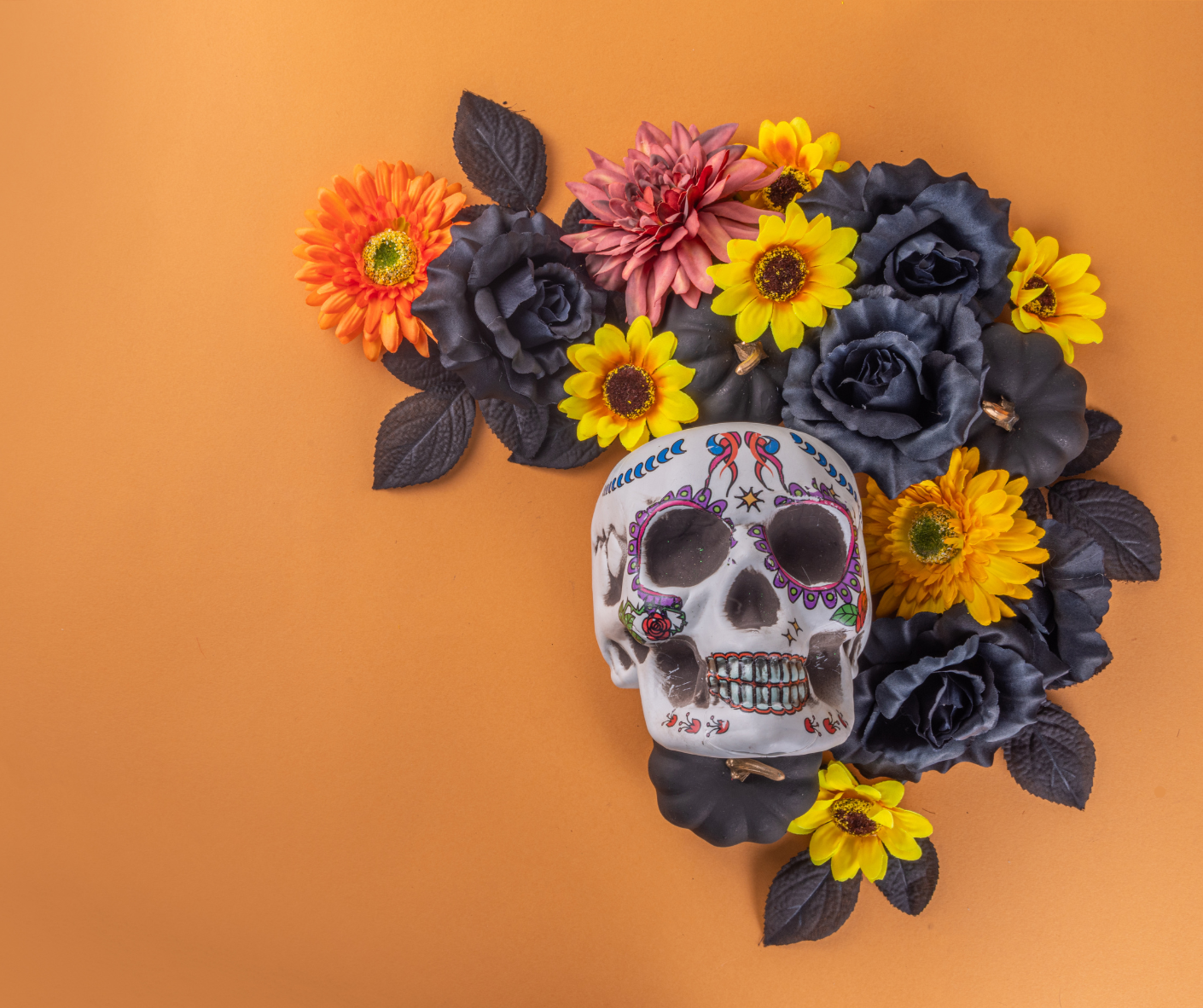Honoring Life & Death: The Spirit of Dia de los Muertos

By Chevie Coronado
Dia de los Muertos, or Day of the Dead, is a vibrant and deeply meaningful Mexican holiday celebrated each year on November 1 and 2. It is a time when families honor and remember their deceased loved ones, inviting their spirits to return to the world of the living for a brief, joyful reunion. Dia de los Muertos combines ancient Aztec customs with Catholic traditions brought by Spanish colonizers, creating a unique blend of pre-Hispanic and European influences. It is not a time for mourning but rather a colorful celebration of life, memory and continuity between generations.
The origins of Dia de los Muertos date back thousands of years to the Indigenous peoples of Mexico, including the Aztecs, who held festivals to celebrate Mictecacihuatl, the goddess of the underworld. For the Aztecs, death was seen as a natural part of life and rather than fearing it, they embraced it as part of a larger cycle of existence. When the Spanish arrived in the 16th century, they attempted to assimilate Indigenous practices into Catholicism. Dia de los Muertos became intertwined with All Saints’ Day and All Souls’ Day. It eventually took on the structure and timing we see today.
The central elements of Dia de los Muertos are the ofrendas, or altars, that families create in their homes, cemeteries and public spaces. Ofrendas are adorned with a range of symbolic objects that honor the departed and invite them back. Marigold flowers, known as cempasuchil, guide spirits with their bright colors and strong scents. Candles are lit to help spirits find their way, while photos and favorite belongings of the deceased personalize the altar. Calaveras, or sugar skulls, are painted with vivid designs to represent the beauty and individuality of each soul, symbolizing the idea that death is not something to fear but to celebrate.
Food is another significant part of Dia de los Muertos, as it’s believed the spirits come back to enjoy their favorite dishes. Families prepare traditional Hispanic foods, including pan de muerto, a sweet bread decorated with bone-shaped patterns and place them on the ofrenda. Fruits, tamales and drinks like atole or tequila may also be included, as each food item represents a connection to the past and the memory of the loved one.
Art and music play an essential role in the festivities as well. Papel picado, a form of colorful, perforated paper is used to decorate ofrendas and symbolizes the fragility of life. In some towns, lively parades fill the streets with dancing, music and costumes. People often paint their faces to look like skeletons or La Catrina, an elegant skeleton figure inspired by the satirical drawings of Mexican artist Jose Guadalupe Posada. La Catrina has come to embody the spirit of Dia de los Muertos and serves as a reminder that, regardless of wealth or status, everyone shares the same fate in the end.
Dia de los Muertos is an occasion for storytelling, as family members share memories and stories of those who have passed, ensuring that their legacy endures. In Mexican culture, death is not an ending but a transformation, a moment when one crosses into another realm. By keeping memories alive through these rituals, families strengthen bonds with past generations and pass down valuable traditions and values to future generations.
Despite its deep cultural roots in Mexico, Dia de los Muertos has gained popularity worldwide. In recent years, communities in the U.S. and other countries have adopted or adapted the holiday with cultural respect and understanding, recognizing it as a sacred time for many Hispanic & Mexican families rather than merely a Halloween-inspired festivity.
Dia de los Muertos teaches a beautiful lesson about the nature of life and death. It reminds us to embrace life, honor those who came before us and understand death as part of a continuous cycle. In celebrating Dia de los Muertos, families share laughter, memories and love, creating a joyful reminder that the spirits of loved ones remain a guiding force, bridging the worlds of the living and the dead.
- Kiara’s Note – Blog
- Mental Health Matters – Blog
- Voices of Hope – Blog
- Humans of Jefferson Center
- Addiction & Substance Use
- Anxiety
- Child Mental Health
- Crisis and Trauma
- Depression
- Exercise
- Just The Facts
- LGBTQIA+ & Pride
- Medicaid
- Men’s Mental Health
- Parenting
- Recovery
- Senior and Older Adult
- Socializing
- Stigma
- Stress
- Suicide Prevention
- Support & Advocacy
- Teen’s Mental Health
- Treatment Options
- Women’s Mental Health